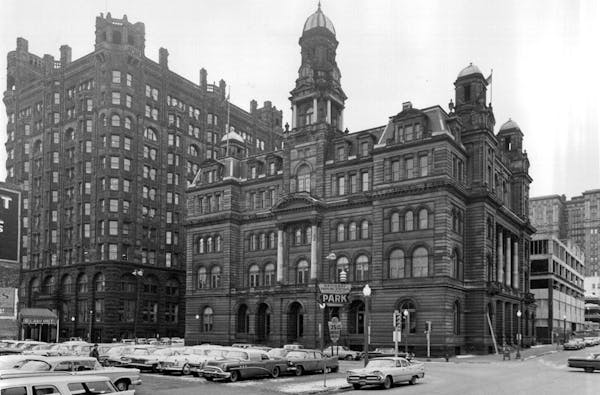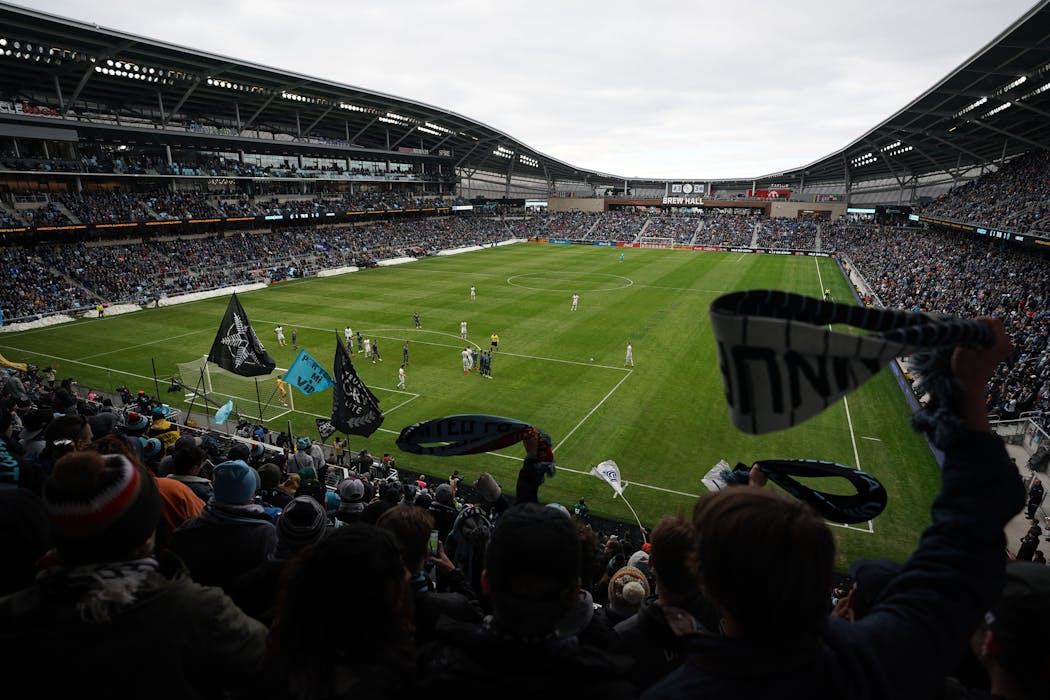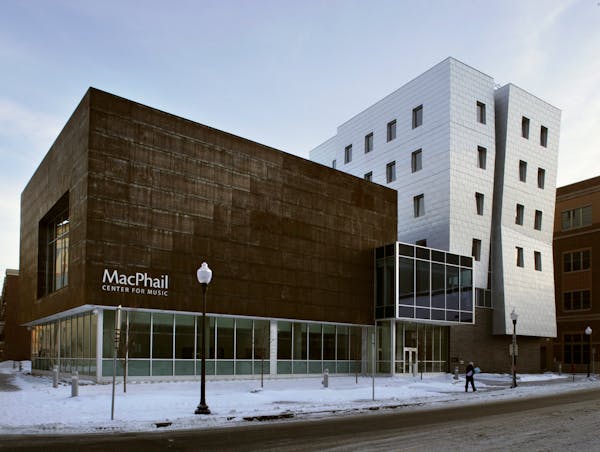Minnesota United FC's new Allianz Field hovers like a low-lying cloud over St. Paul's Midway area — a curving, futuristic beacon for the streetcar-era neighborhood and travelers on Interstate 94.
There's nothing quite like the curving, airy structure in the state.
Designed by the international sports architecture firm Populous, the stadium is almost entirely clad in fabric — an industrial fabric called polytetrafluoroethylene, or PTFE. The fabric, which was developed in the 1930s, was adapted by NASA for heat shields and soon commercialized as Teflon. But only recently is its promise in architecture being discovered.
Sophisticated architectural fabrics such as PTFE, and its transparent version, ETFE, now clad the exteriors of major sports facilities, including the roof of U.S. Bank Stadium in Minneapolis as well as the Allianz Arena in Munich. Combined with the equally revolutionary LED lighting technology, Munich's soccer stadium was the first of its kind to glow at night with changing colors depending on which team was playing.
With just under 20,000 seats, St. Paul's Allianz Field is less than a quarter of the size of its German counterpart. But the translucency of its laminated PTFE surface and programmable LED lighting have the same effect. The stadium's tubular steel structure shapes subtle fabric ridges, creating a tactile character in daylight and striking background patterns when illuminated at night.
Connecting players and fans
Compared with major European soccer teams, American franchises are relatively young, with smaller fan bases. And American stadiums are built to fit.
"We try to build small and build well to maximize the game experience," said Bruce Miller, who led the Allianz Field project for Populous. While Europeans prioritize a strong focus on the game field, or pitch, Americans also care about the ambience — the sense of intimacy with the players and the other fans.
Populous achieved this club-like atmosphere at Allianz by establishing clear sightlines and locating the team stores and cafes along a Main Street-like concourse. In addition, no seat is more than 125 feet from the field.
"When you walk through each of the stadium's four entries, you immediately get a full view of the field and the sky, a sense of enclosure and where you are," Miller says.
And, in a first for the MLS league, the pitch was elevated 16 inches above the floor of first-row seats to bring the game even closer.
Designed for intensity
On the April 13 opening kickoff, a few snowbanks still lined the field. Aside from that, you wouldn't have known that the Twin Cities had just been hit by a spring blizzard. The stadium's encircling fabric skin screened out the wind and retained heat.
That's why project architect Bruce Wright said Allianz Field offers a glimpse of the future of fabric architecture in cold climates.
"When architectural fabrics are used correctly in tension, they are as durable as any building roof and many times lighter," he said. "A standard commercial roof has an expected working warranty of 10 to 15 years; fabric is now rated at 20 to 30 years." PTFE and similar materials also provide excellent insulation and wind protection.
In addition, PTFE makes for a good sound reflector in a stadium. For soccer's young audiences, rock-concert volume offers a total sensory and social experience.
The "safe-standing supporter section" is where die-hard supporters stand throughout the game, wearing Minnesota United swag, waving flags and stomping their feet in unison, a sound that's amplified by the aluminum bleachers.
It's anything but friendly for visiting clubs. The supporters area "is built as steep as is safely possible … " according to Populous. "This creates a wall of intimidation for opposing teams and energizes the entire bowl."
Pity the challengers.
But for United fans, the stadium delivers a supercharged, all-encompassing, multisensory experience. Such moments of complete immersion don't just happen — while they're generated by the fans, they're intensified by such intentional design.
Frank Edgerton Martin is a consulting writer for architecture and design firms and a historic landscape preservation planner.
Singing, ceremonies and straw hats: Olympics opening ceremony in Tahiti centers Polynesian culture

Three 101-year-old friends recall fond memories in 1940s Alexandria
Celine Dion makes musical comeback at Paris Olympics with Eiffel Tower serenade





